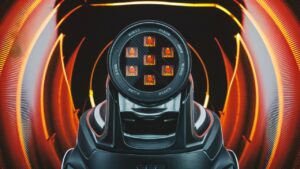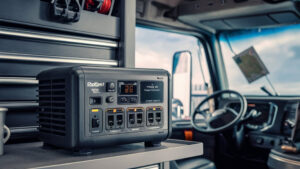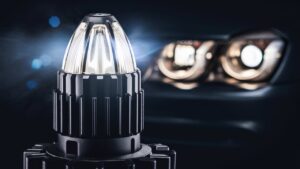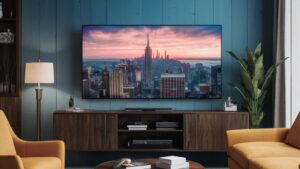Vlogging is a popular way to share your life online. The right camera can make your videos look professional.
Are you new to vlogging and wondering which camera features you need? Or maybe you have a camera but need help with the setup? This blog post will guide you through the essential features to look for in a vlogging camera.
We’ll also cover basic setup tips to get you started quickly. Whether you’re a beginner or looking to improve your vlogging game, this guide has something for you. Keep reading to learn how to choose the best camera and set it up for your vlogs.
Choosing The Right Camera
Choosing the right camera is crucial for vlogging success. The perfect camera captures high-quality videos and offers user-friendly features. Understanding your needs and preferences helps in making the right choice.
Budget Considerations
Budget plays a major role in selecting a camera. High-end models offer advanced features but come at a higher cost. Determine how much you are willing to spend. There are great options in every price range. You do not need to break the bank for a good camera.
Consider the total cost, including accessories. Tripods, microphones, and extra batteries can add up. Allocate your budget wisely. Prioritize essential features over luxury ones.
Popular Camera Brands
Many brands offer excellent vlogging cameras. Canon, Sony, and GoPro are popular choices. Canon cameras are known for their user-friendly interface. They offer good image quality and durability.
Sony cameras are renowned for their advanced technology. They provide excellent low-light performance and fast autofocus. GoPro cameras are perfect for action vlogging. They are compact, waterproof, and highly durable.
Research each brand’s offerings. Compare their features and prices. Choose the brand that fits your needs best.
Essential Camera Features
When choosing a camera for vlogging, understanding essential features is crucial. These features can significantly affect the quality of your content and the ease of your filming process. Below, we’ll dive into two key features: resolution and frame rate, and low light performance.
Resolution And Frame Rate
Resolution determines the clarity of your video. A higher resolution like 4K gives sharper and more detailed images. This can make your vlogs look professional and visually appealing.
Frame rate, on the other hand, affects the smoothness of motion in your videos. A frame rate of 60 fps is ideal for capturing fast-moving scenes without blur. If your vlogs involve action shots or a lot of movement, prioritizing a higher frame rate is essential.
Think about the type of content you create. If you focus on travel vlogs, showcasing vibrant landscapes in 4K can captivate your audience. For daily vlogs, 1080p resolution with 30 fps might be sufficient and easier to handle during editing.
Low Light Performance
Low light performance is another critical feature. Cameras with good low light capabilities can produce clear videos even in dim conditions. This is particularly useful if you vlog indoors or during evening hours.
Look for a camera with a large sensor and high ISO range. These specifications help in capturing more light, reducing noise, and maintaining video quality in low-light scenarios. For example, the Sony Alpha series is known for excellent low-light performance.
Consider where you’ll be filming most often. If you’re often in low-light environments, investing in a camera with superior low-light performance can save you from grainy, unusable footage.
What kind of vlogs do you create? Understanding your specific needs can help you choose the right camera features. Investing in the right equipment can transform your vlogging experience and elevate your content quality.
Lens Options
Choosing the right lens for your vlogging camera can be daunting. The lens you select impacts video quality. It also determines the types of shots you can capture. Below, we’ll explore various lens options to help you make an informed choice.
Fixed Vs. Interchangeable Lenses
Fixed lenses are built into the camera. You can’t remove or swap them. They’re user-friendly and perfect for beginners. No fussing with extra parts. Interchangeable lenses, on the other hand, offer flexibility. You can change lenses based on your needs. This option suits more advanced users. It allows for creative freedom.
Wide Angle Vs. Telephoto
Wide-angle lenses capture more of the scene. Ideal for landscapes or group shots. They create a sense of space. Telephoto lenses zoom in on distant subjects. Perfect for capturing details from afar. They bring the subject closer. Both lens types serve different purposes. Choose based on your vlogging style.
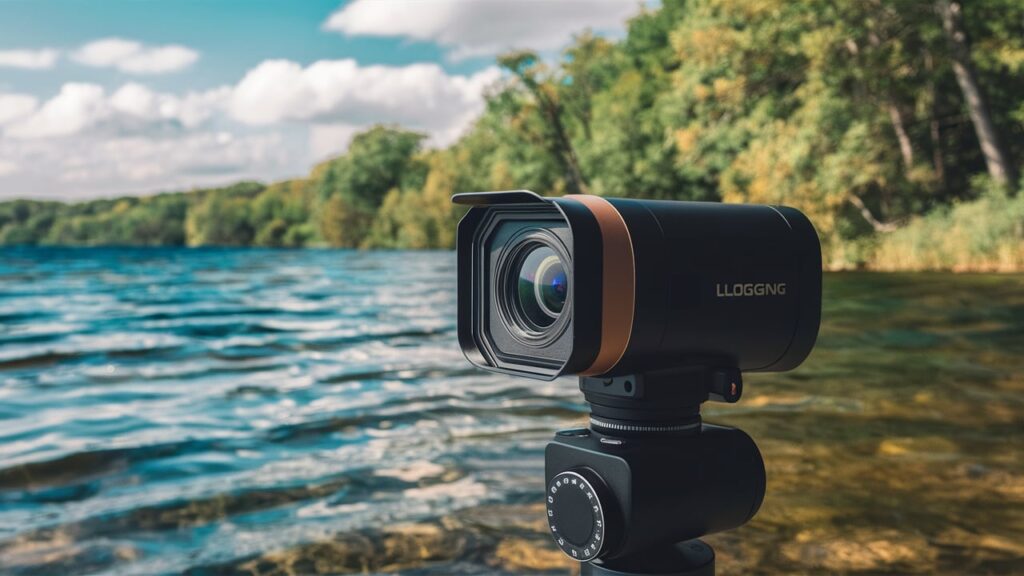
Audio Quality
When it comes to vlogging, audio quality is just as important as video quality. Good sound can significantly enhance your content and keep your audience engaged. Poor audio, on the other hand, can quickly turn viewers away.
Built-in Microphones
Most vlogging cameras come with built-in microphones. These are convenient and easy to use, especially for beginners. However, they often pick up a lot of background noise.
Built-in mics are typically not the best at isolating sound. This means you might get unwanted noise from traffic, wind, or even your own camera handling. I remember my first vlogs had a lot of these issues, making the content less enjoyable.
External Microphone Options
To improve your audio quality, consider using an external microphone. These mics can be attached to your camera or used separately. They offer better sound isolation and clarity.
Shotgun microphones are popular among vloggers. They are directional and pick up sound from a specific area, reducing background noise. Lavalier microphones are also a great option. These clip-on mics are ideal for recording clear audio, especially in noisy environments.
Using an external microphone can dramatically improve your audio quality. It makes your videos more professional and enjoyable to watch. Have you ever noticed how much better a video sounds with a good mic?
Investing in the right audio equipment can make a huge difference in your vlogging success. Don’t let poor sound quality hold you back. Take the time to find the best microphone setup for your needs.
Stabilization Techniques
Stabilization Techniques are crucial for creating smooth, professional-looking vlogs. Shaky footage can distract viewers and reduce the overall quality of your content. Let’s dive into some effective stabilization methods to enhance your vlogging experience.
In-camera Stabilization
Many modern vlogging cameras come with built-in stabilization features. These can significantly reduce shake and produce smoother footage. It’s a great option if you prefer a minimalist setup.
For example, cameras with optical image stabilization (OIS) use internal mechanisms to counteract movement. This is particularly useful for handheld shooting. Digital stabilization is another option, where the camera uses software to stabilize the video.
Experiment with both types to see what works best for your style. Remember to check if your camera offers these features and how to activate them. This small step can make a big difference in your videos.
Gimbals And Tripods
Gimbals and tripods are essential tools for serious vloggers. A gimbal is a handheld device that keeps your camera steady while you move. It’s perfect for action shots or walking scenes.
I once used a gimbal while vlogging my hiking trip. The footage was incredibly smooth, even on rough terrain. It allowed me to focus on the scenery rather than worrying about shaky shots.
Tripods, on the other hand, are great for static shots. They provide a stable base and are ideal for sit-down vlogs or time-lapses. Look for a lightweight, portable tripod that’s easy to carry around.
Using a combination of these tools can elevate your vlogs. Have you tried using a gimbal or tripod in your vlogging setup? If not, consider investing in one to see the improvement in your video quality.
Lighting Setup
Setting up the right lighting can significantly elevate the quality of your vlogs. Whether you rely on natural light or artificial lighting equipment, understanding how to use these resources effectively will make a noticeable difference. Good lighting not only improves the visual appeal but also keeps your audience engaged and coming back for more.
Natural Light
Natural light is one of the best and most cost-effective options for vloggers. It provides a soft, even illumination that can make your videos look professional without spending a dime. Position yourself facing a window to avoid unwanted shadows and harsh lighting on your face.
Using natural light means you have to be mindful of the time of day. The golden hour, shortly after sunrise or before sunset, gives a warm glow that’s perfect for vlogging. Try to avoid filming at noon, as the overhead sun can create unflattering shadows.
Consider the weather, too. A cloudy day can act as a natural diffuser, providing soft, even lighting. If you can’t rely on consistent natural light, it might be wise to consider some artificial options as a backup.
Artificial Lighting Equipment
Artificial lighting is essential when natural light is not an option. The most common types of artificial lights used by vloggers are ring lights, softboxes, and LED panels. Each has its advantages, depending on your specific needs.
Ring lights are popular because they provide even lighting and a catchlight effect in your eyes. Softboxes, on the other hand, create a more diffused light, reducing harsh shadows. LED panels are versatile and can be adjusted for brightness and color temperature.
When setting up artificial lights, consider the three-point lighting technique: key light, fill light, and backlight. This setup ensures that your face is well-lit, shadows are softened, and you stand out from the background. Properly positioning these lights can dramatically improve your video quality.
Investing in good lighting equipment might seem daunting, but it’s crucial for maintaining a professional appearance in your vlogs. Have you ever noticed how your favorite vloggers always look flawless? Chances are, their lighting setup is on point. So, what are you waiting for? Start experimenting with different lighting setups to find what works best for you!
Editing Software
Editing software is crucial for vlogging. It transforms raw footage into polished videos. Good editing software can enhance your content. It can make your videos more engaging and professional.
Beginner-friendly Options
Some editing tools are perfect for beginners. They have simple interfaces and easy-to-use features. iMovie is a popular choice for Mac users. It offers basic editing tools and is free.
Windows users can try Windows Movie Maker. It is user-friendly and great for simple edits. Another option is Shotcut. It is free and works on multiple platforms. Shotcut provides basic editing tools and tutorials.
Advanced Tools
Experienced vloggers may need advanced editing software. Adobe Premiere Pro is a top choice. It offers extensive features and professional tools. You can edit in high resolution and use various effects.
Final Cut Pro is another powerful tool. It is designed for Mac users and provides advanced editing options. DaVinci Resolve is also popular. It offers high-end features and a free version for beginners.
Creating Engaging Content
Choose a vlogging camera with high resolution and good low-light performance. Ensure it has a flip screen for easy monitoring. Proper setup involves stable tripod and external microphone for clear audio.
Creating engaging content can make your vlogs more appealing to viewers. It keeps your audience coming back for more. To achieve this, focus on storytelling, consistency, and scheduling.
Storytelling Tips
Good storytelling can captivate your audience. Start with a strong hook to grab attention. Use a clear structure: beginning, middle, and end. Share personal experiences to create a connection. Show, don’t just tell. Use visuals to enhance your story. Keep your message simple and focused. Avoid complex jargon.
Consistency And Scheduling
Consistency builds trust with your audience. Create a content calendar. Stick to a regular posting schedule. This helps viewers know when to expect new content. Batch filming can save time. Record multiple videos in one session. Use scheduling tools to automate posting. This ensures your content goes live even when you’re busy. Track your performance. Adjust your schedule based on viewer engagement.
“`
Frequently Asked Questions
What Are The Features Of Vlogging?
Vlogging features include video content creation, personal storytelling, audience engagement, visual effects, and consistent posting. It often involves travel, lifestyle, or niche topics.
What Should I Look For In A Vlogging Camera?
Look for a vlogging camera with excellent image quality, stabilization, a flip screen, good audio, and lightweight design.
What Are The Things Needed For Vlogging?
You need a good camera, microphone, tripod, lighting, and video editing software for vlogging.
What Camera Equipment Do Vloggers Use?
Vloggers often use DSLR or mirrorless cameras for high-quality video. Popular choices include the Canon EOS M50 and Sony Alpha a6400. They also use tripods, external microphones, and ring lights for better audio and lighting.
Conclusion
Choosing the right vlogging camera is essential for high-quality content. Focus on features like image stabilization, good audio, and portability. Experiment with different setups to find what works best for you. Practice makes perfect, so keep creating and improving. Always stay updated with the latest trends and technologies.
Your vlogs will get better with time and effort. Happy vlogging!



